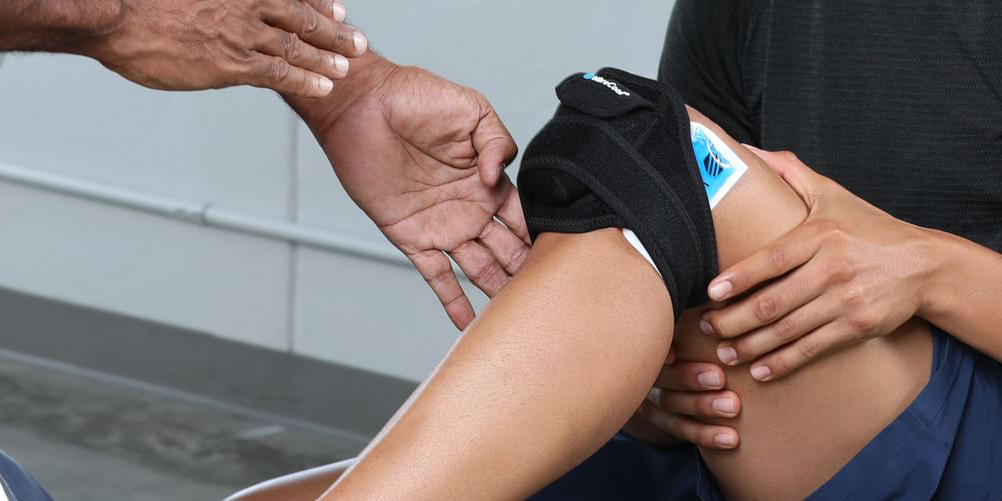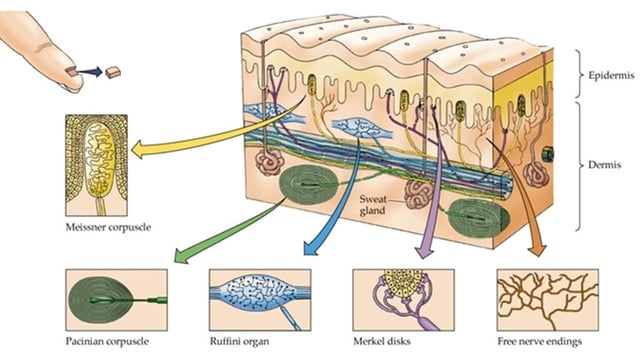Blog

Pain Management Using M-stim vs. E-stim - PCL
Pain Management Using M-Stim vs. E-Stim
To understand how to engage in natural pain management to treat aches and pains, you need to understand a bit of biology and how the human body perceives pain.
The body has specialized nerve endings that sense touch. These include:
-
The Meissner corpuscles, which perceive low-frequency vibrations, such as an object moved across the skin or light touch
-
The Pacinian corpuscles, deep nerves that respond to fast frequencies to tell where your body is in space
-
Merkel disks help us sense deep pressure
-
Ruffini corpuscles, which are located in the tendons and ligaments and can help with the sensation of stretch
These are triggered by specific frequencies of movement or mechanical pressure, and are transmitted on large, fast groups of A-Beta nerves that overpower small, fast, free A-Delta nerve endings that transmit pain.
The Role of Nerve Endings in Pain Management
To put it in physical terms, think about the body’s pain management system this way:
-
Putting icy menthol (like Tiger Balm) on a hurt shoulder makes the fast pain signal less intense. A new Nobel Prize in 2021 was given for the discovery that Meissner corpuscles were involved.
-
Pressing your hip when you bang it on a table or using acupressure to relieve pain (Merckel)
-
Stretching and massaging to reduce pain (Ruffini)
-
Shaking a hand or finger that got slammed or rubbing a bumped elbow(Pacinian)

The body is designed to safely interact with your environment, so once a pain receptor sends the alarm, the other receptors take over to determine how much to move away from the danger. Not surprisingly, the Pacinian position sense and motion nerves are the most valuable to your safety, and are also the most effective at overriding pain.
E-Stim vs. M-Stim as Pain Management Techniques
We’ve been using direct electrical stimulation (E-Stim) of the nerve fibers transmitting the mechanical sensations to manage pain for decades. Before we knew about the large role motion plays in pain relief through touch, the most common frequencies of electricity used were in the low-light touch range, or in an intermediate 40 Hz range. This TENS electrical stimulation is good for neuropathic Meissner pain relief.
In 2012, Manfredi showed that the fast Pacinian receptors responded to 180-250Hz. In 2017, Hollins published a study demonstrating that Pacinians determined 90% of the magnitude of mechanical stimulation (M-Stim®) on pain.
It makes sense that the body would override pain to escape it. We also know that repeated stress that doesn’t damage us, like pushups, makes us stronger. Muscles and bones grow in response to mild stress.
Mechanotransduction of pressure, vibration, or movement builds strength. In addition to proving that the right frequency of M-Stim can block pain, studies show it can help tissue mass and strength, and at 150Hz and above it can even increase blood flow (at the right amplitude of vibration).
The power of a spinning motor matters. When it’s too strong, it can reduce blood flow. When it’s REALLY strong it can damage nerves, particularly in the hands. For years vibration was associated with the repeated impact of jackhammers, long un-cushioned truck rides, and handheld power tools that damaged sensation and circulation over time.
How to Use Vibration to Reduce Pain
Now we know the parameters of safe, and even helpful, vibration. The production ability to make motors small and fast enough to give effective M-Stim has only been in the last two decades. Many studies of vibration before this time didn’t report amplitude, or even frequency, and were almost universally below the threshold for Pacinian stimulation.
We now know that modalities including motion, massage, and pressure are good for stiff, injured, or overused tissues. Knowing the frequencies and amplitudes of safe M-Stim can give pacemaker-safe options for everyone.
VibraCool® uses everything we’ve learned about mechanical stimulation for pain management to reduce aches and overuse injury pain. And it’s an all-natural way to treat pain to avoid medication and topical creams that keep you returning to the pharmacy or grocery store. Purchase VibraCool once and enjoy the ongoing pain relief it provides.
Clinicians and practitioners, if you’d like to learn more about how VibraCool works and the benefits it can have for your patients, visit our page with in-depth information for providers.